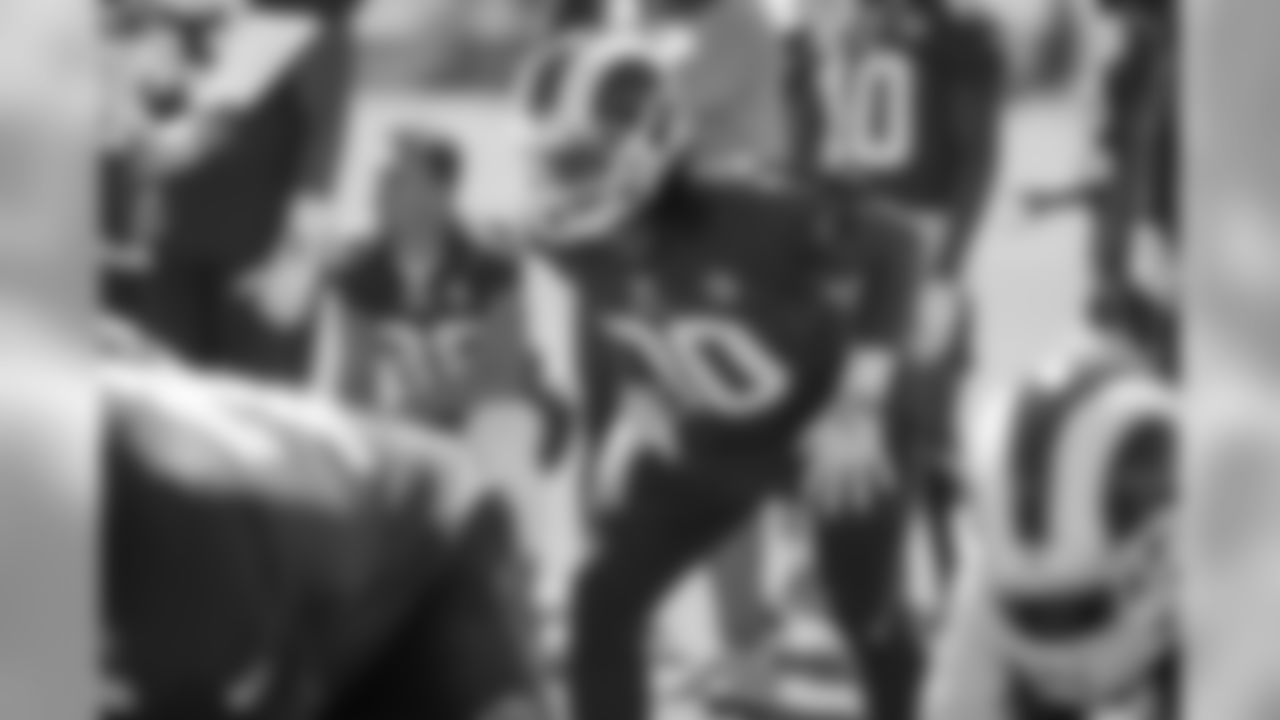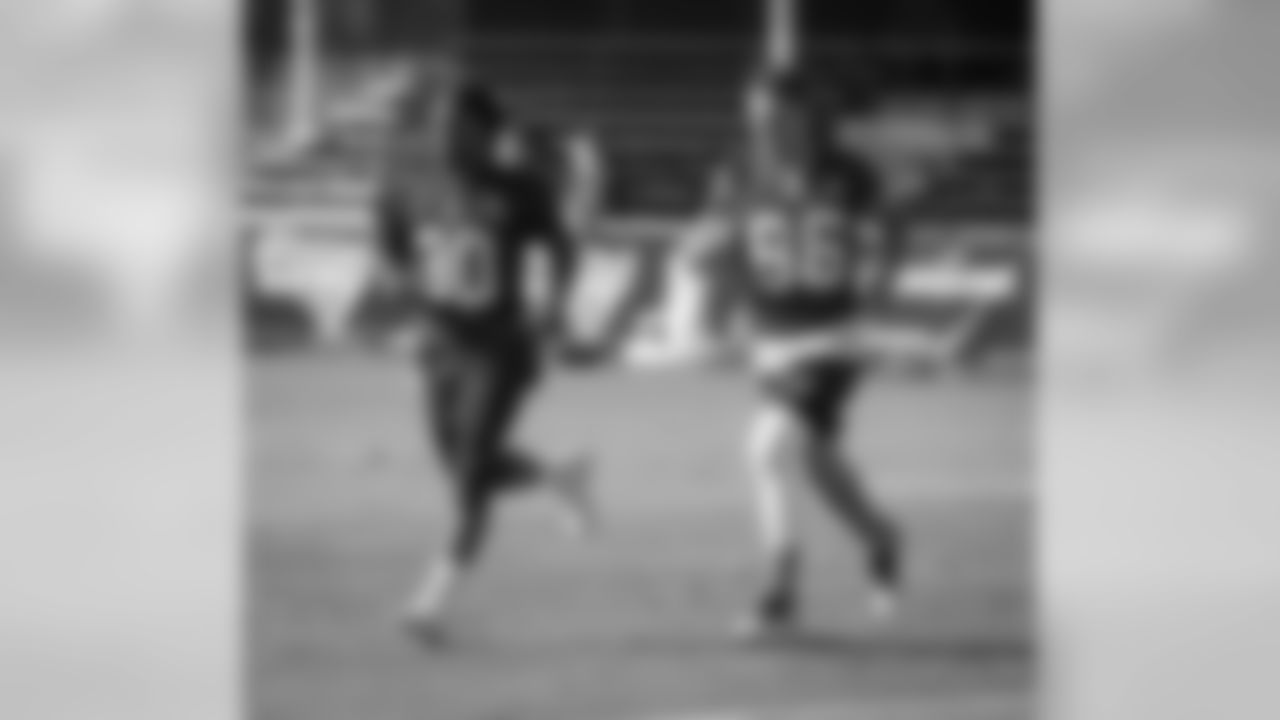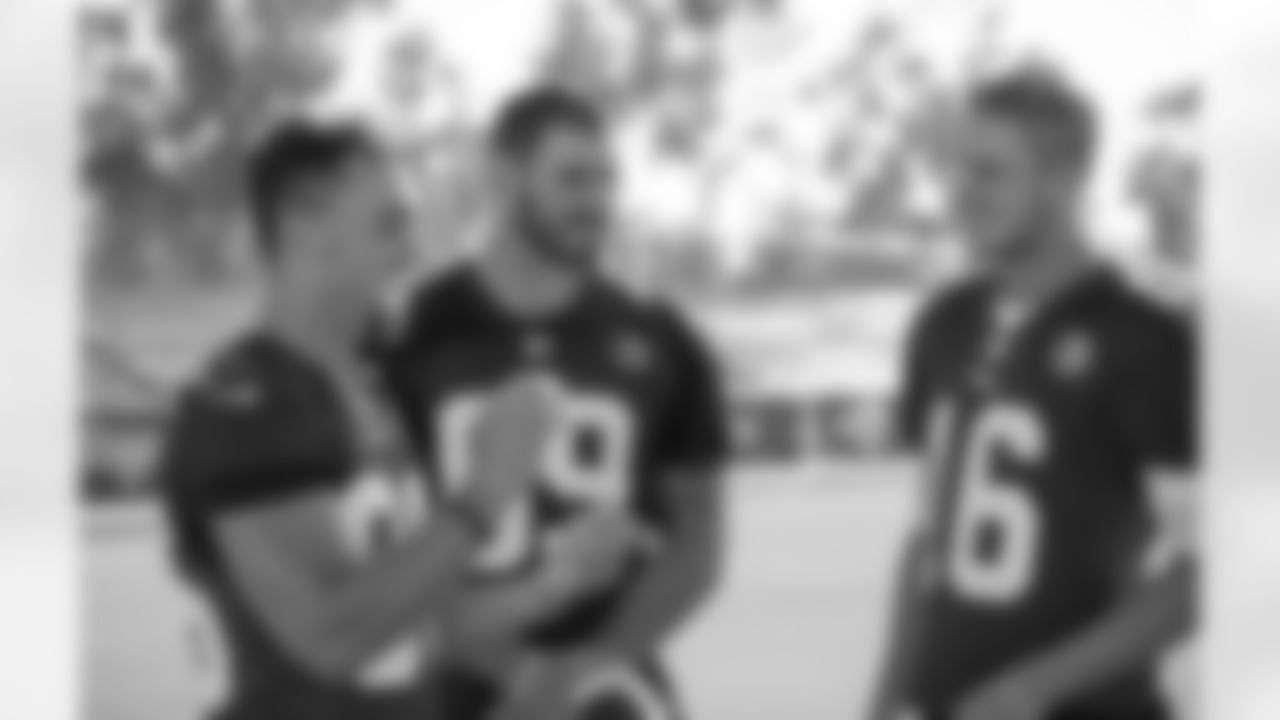Using the ball as a prop. Group demonstrations. Going to the ground.
You want more celebrations? This year, you'll have them, as the NFL has relaxed its rules. NFL referee Craig Wrolstad and his crew are in town for this week's game against the Cowboys and on Thursday afternoon explained all the rule changes to local media.
What is and isn't allowed for player celebrations dominated the conversation. But to boil it down, the rule changes are essentially to inject a bit more fun back into the game.
"I think it's good," Rams head coach Sean McVay said on Thursday. "It's about having fun and enjoying the competition and ultimately, it is a great entertainment sport and I think that offers a unique opportunity for the players to be able to enjoy when they're having some success and the fans can get a kick out of some of the things they can do."
There may be a few changes to the rule as the season goes on, in large part because players come up with some out there celebrations.
"These players are creative and they come up with things we've never seen and never thought of before, and then we're going to be thinking, 'Well wait a second, is it on that side of the line, or on this side of the line?'" Wrolstad said. "The way it's written, we think we can be consistent, and we'll see if any changes are needed in the future."
There are still a few elements to celebrating that aren't allowed: taunting an opponent and using any object other than the ball as a prop.
One element that may be a factor in the length of celebrations is the play clock. Now after a touchdown, the play clock will begin at 40 seconds. If a touchdown must be reviewed, the play clock will stop at 20 seconds until the officials deem play ready to continue. The same applies for turnovers.
"The idea is to get the extra point team out there as soon as possible and get the extra point kicked within those 40 seconds," Wrolstad said. "But we're trying to get the 90 seconds between the touchdown and the try, or the 1:20 or whatever — we're trying to get that down to 40 seconds, or as close to 40 seconds as possible."
It's an effort to speed up the pace of the game, which will also affect commercial breaks. Instead of five breaks of four commercials per quarter, now there will be four breaks of five commercials per quarter.
"Coming in and out of commercials — since we have less commercials — should be a little quicker," Wrolstad said.
"If we can save four to five minutes per game in dead time, that's kind of the goal," he added. "So the pace of the game, hopefully, you'll see is quicker."
While celebrations are clearly the most popular change, there are plenty more new rules and points of emphasis for 2017. Briefly, here they are:
NO LEAPING
Players are no longer allowed to leap over the line of scrimmage — and in the process, the linemen — in an effort to block a field goal or extra point attempt.
MORE DEFENSELESS RECEIVER PROTECTION
A receiver running a passing route now has protection when a defender approaches from the side or behind. The defender may not apply forcible contact to the head or neck area.
NO CRACKBACK BLOCKS
Crackback blocks — when an offensive player split out wide comes toward the ball at the snap to seal off a defender — are now prohibited by a player in motion and in the backfield, even if the player isn't more than two yards outside of the offensive tackle at the snap.
**
OVERTIME?**
Though the officials didn't address it on Thursday, the overtime period in preseason and regular-season games is now 10 minutes, down from 15.
POINTS OF EMPHASIS
The officials also discussed the four points of emphasis this season — meaning rules that are already implemented but will be more strictly enforced. Those are…
LOW HITS ON THE PASSER
Forcible contact to the knee area or below, with any defensive player driving his shoulder, chest, or forearm into the quarterback, is a 15-yard penalty. Defenders are supposed to use an arm to swipe the legs instead.
BLINDSIDE BLOCKS
Players are supposed to target below the neck and above the waist when running toward or parallel to his own end line.
LAUNCHING
Anytime a defender leaves both feet to jump before making forcible contact with his helmet to a defenseless player's body, it's a foul.
CONTACT DOWNFIELD
Officials will be looking for excessive contact from both offensive and defensive players at the line of scrimmage or at the top of routes. They'll scan for receivers pushing off and defenders grabbing.
Check out photos from Day 11 of the Los Angeles Rams Training Camp presented by AT&T.












































































